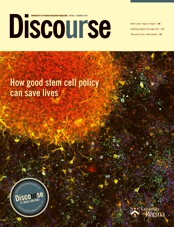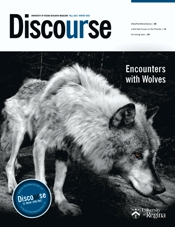Carmela Haines, Mike Norman - the systems analyst at Access Communications who undertook all of the IT development for the research project - and Eman Almehdawe at Access Communications.

With over 50 technicians on service calls in over 300 communities across Saskatchewan, cable television and telecommunications provider Access Communications knows that innovating its systems to improve routing and scheduling can save money and lead to better customer service. Their recent partnership with Eman Almehdawe, associate professor of operations management in the Faculty of Business Administration, helped the firm accomplish these goals and more.
“We wanted to ensure that we had the most efficient routes for our technicians to take as they travel to different communities,” says Access chief operating officer, Carmela Haines, adding that the company splits the province into five working areas, each with a depot.
“I do research, but I don't usually get to see it live, so that was very interesting and rewarding," says Almehdawe.
After successfully applying for a National Science and Engineering Research Council (NSERC) Engage Grant, which funds collaborations between companies and universities, Almehdawe kicked off the project in March 2018 by hiring postdoctoral student Ehsan Pourjavad to help her explore the company’s scheduling challenges and develop an optimization model.
To make recommendations for scheduling technicians’ working days, Almehdawe and Pourjavad took into account elements such as driving time between service calls, length of calls, the number of technicians available (and the expense of using outside contractors), plus human factors such as sick days.
An added goal was to improve customer service by using service time windows, which was incorporated into the optimization model. Some suggestions to reduce driving costs included paying for technicians to stay overnight in some communities so they could start working in a neighbouring community the next morning, as well as weighing the costs of paying overtime to techs to stay longer for an extra call against the costs of having them drive out to that call again.
To help determine the best options for each complex day’s worth of hundreds of calls and routes, Almehdawe and Pourjavad created an algorithm to connect Google Maps with the company’s current routing system to calculate distances, compare all possibilities, and provide the best answers to maximize employee productivity.
Once they developed the mathematical model and proved that the concept worked, Almehdawe applied for another NSERC Engage Plus Grant (where companies pay half of the funds) to extend the project by six months so Access could begin to integrate the model with their actual booking and dispatching systems. Today, the company is testing the integration with a planned launch immanent.
For Almehdawe, whose major research focus has been on optimization, queuing theory, and analytics in various sectors – including emergency medical services, agriculture, and financial technology – the real-world component of working with a client made this project particularly engaging. “What's interesting about the Access collaboration is that we were able to develop the tool and then take it back to the company, then see what adjustments we needed to make,” she says. “I do research, but I don't usually get to see it live, so that was very interesting and rewarding.”
Pourjavad, who has now moved on to a second postdoctoral fellowship at Polytechnique Montréal, agrees. “This project helped me to understand how we can apply operations research techniques to actual industry problems where we cope with a lot of special conditions that scholars do not consider or address in their research projects. In fact, actual concerns and conditions of this project opened new research windows for me,” he says.
Haines is looking forward to seeing the new system in action very soon, and says the collaboration was a productive one for Access. “It was a very good experience and we would do another project with University of Regina researchers.”












